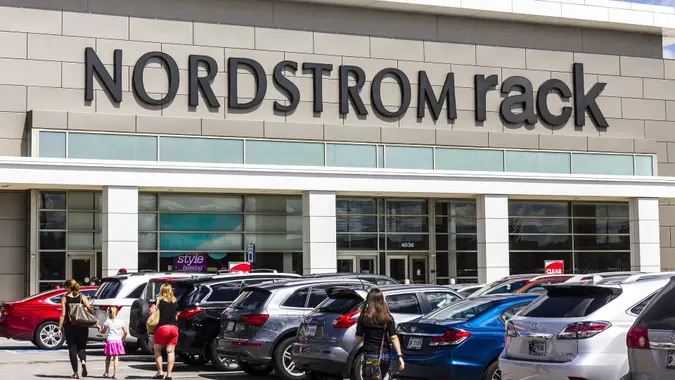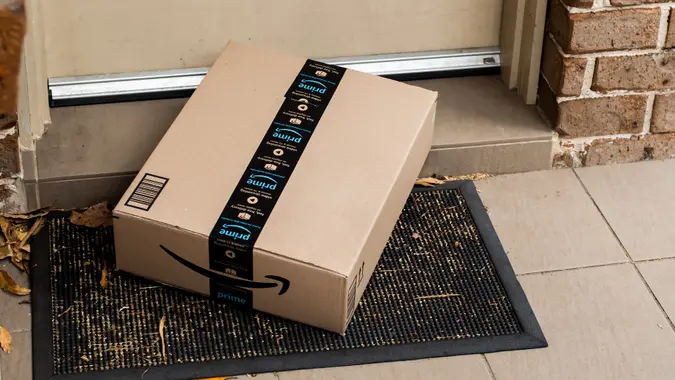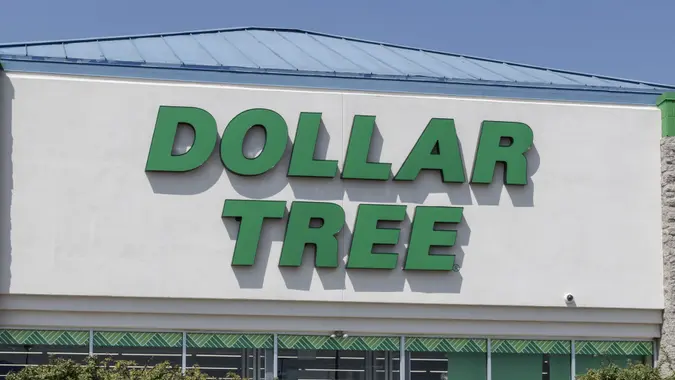6 Car Ownership Expenses That Really Add Up

Commitment to Our Readers
GOBankingRates' editorial team is committed to bringing you unbiased reviews and information. We use data-driven methodologies to evaluate financial products and services - our reviews and ratings are not influenced by advertisers. You can read more about our editorial guidelines and our products and services review methodology.

20 Years
Helping You Live Richer

Reviewed
by Experts

Trusted by
Millions of Readers
So, you’re ready to hit the open road and want to buy a car. You’re likely thinking only of the price tag on your set of wheels and not all the persnickety little costs of car ownership. Many expenses get overlooked, but that doesn’t stop them from adding up fast once the keys are in your hand.
Understanding these costs can help you make better decisions when it comes to which car you buy. Here are the top six car ownership costs you may not have thought about that should factor into your budget.
Vehicle Registration
Sure, when you first buy a car, especially from a dealership, you have to pay for the title, taxes and fees. Usually, the dealership will handle the paperwork for you, but they’ll still add the fees to your total price.
This could run you hundreds of extra dollars. But, even if you thought of that cost, you might not have thought of recurring registration fees, which every state has either annually or every two to three years.
You’ll still have to cough up a couple hundred dollars, or more, to register your car with the state. Your car will also have to pass an emissions test in some states. That test will up your total cost of ownership by a pretty penny as well.
Fueling Up
You know you have to buy gas. Most people who drive their cars to work have to fill up their tanks at least once a week. It’s an average cost that comes with the joy of car ownership, and you’re prepared for it.
But are you prepared for a rise in gas prices? Over the last decade, gas prices have fluctuated wildly across the U.S. from around $2 to around $5 per gallon. Gas prices hovered close to $5 per gallon in states like California.
As a result, you can expect to spend around $130 to $200 per month on gas alone. This is more than some people pay for their monthly car insurance bill.
If you buy a car while gas prices are lower, be prepared for them to rise suddenly and stay that way. The difference could mean an extra hundred dollars or more in your monthly budget. If you are driving an electric vehicle, you can expect to spend around $65 per month.
Insurance
Auto insurance is mandatory in every state in the country. You probably already know that, though, right? You can get great deals with direct insurance suppliers, and there are tons of ways to save money.
But there are also tons of ways to lose money on insurance and one of them depends largely on the type of car you buy. Sports cars, high-performance, and luxury vehicles have really high rates. Insurance companies are evaluating the risk for sports cars, and the cost to replace or fix when it comes to luxury cars.
These vehicles could cost you hundreds of dollars each month in insurance coverage. So, it might pay to shop for insurance before you shop for a car. For the average car, a full-coverage plan will run you $223 per month and $67 per month for minimum coverage.
Maintenance and Repairs
A number of vehicle ownership costs involve just keeping your engine running. Yet, it’s the nature of machinery that some cars are cheaper to fix than others. Hondas and Toyotas, for example, are pretty cheap and easy to repair, whereas Fords may be cheap to repair, but they break down more, so you’ll end up spending more in the long run.
European cars, on the other hand, are dramatically expensive to repair, and they’re tricky to work on, which means higher labor costs. A single headlight replacement on an Infiniti or Volvo can run you hundreds of dollars.
So, when shopping for your car, take into consideration how often the car breaks down, how expensive it is to fix and how easy it is to work on. You can review Consumer Reports to see which brands cost the most to repair.
Depreciation (It’s Rapid for Some Models)
As with maintenance and repairs, some cars depreciate faster than others, and some hold their value well for years. Much of the reason for depreciation is those repairs.
Toyotas and Hondas, for example, will hold their value for years, barely depreciating even after a decade. That Infiniti, however, or its American counterpart, the Nissan, loses tons of value almost as soon as you drive it off the dealer’s lot.
When a car depreciates, you lose your ability to make money from it when you sell. It’s an important consideration to take before you buy.
Parking
Finally, depending on where you live, you may have to pay for parking. If you have to park your car in a garage near your home that charges a monthly fee, you must add that to your budget.
Likewise, if you’ve been taking public transportation to work and now you’ll be driving, you might not realize you’ll have to pay for street or garage parking. This doesn’t even factor in the time you’ll have to take to find parking.
Be aware of these extra costs, like parking, repairs, insurance, and more, before you choose a car and buy it. Educating yourself on this topic can end up saving you thousands of dollars.
Caitlyn Moorhead contributed to the reporting for this article.
More From GOBankingRates
 Written by
Written by  Edited by
Edited by 
























